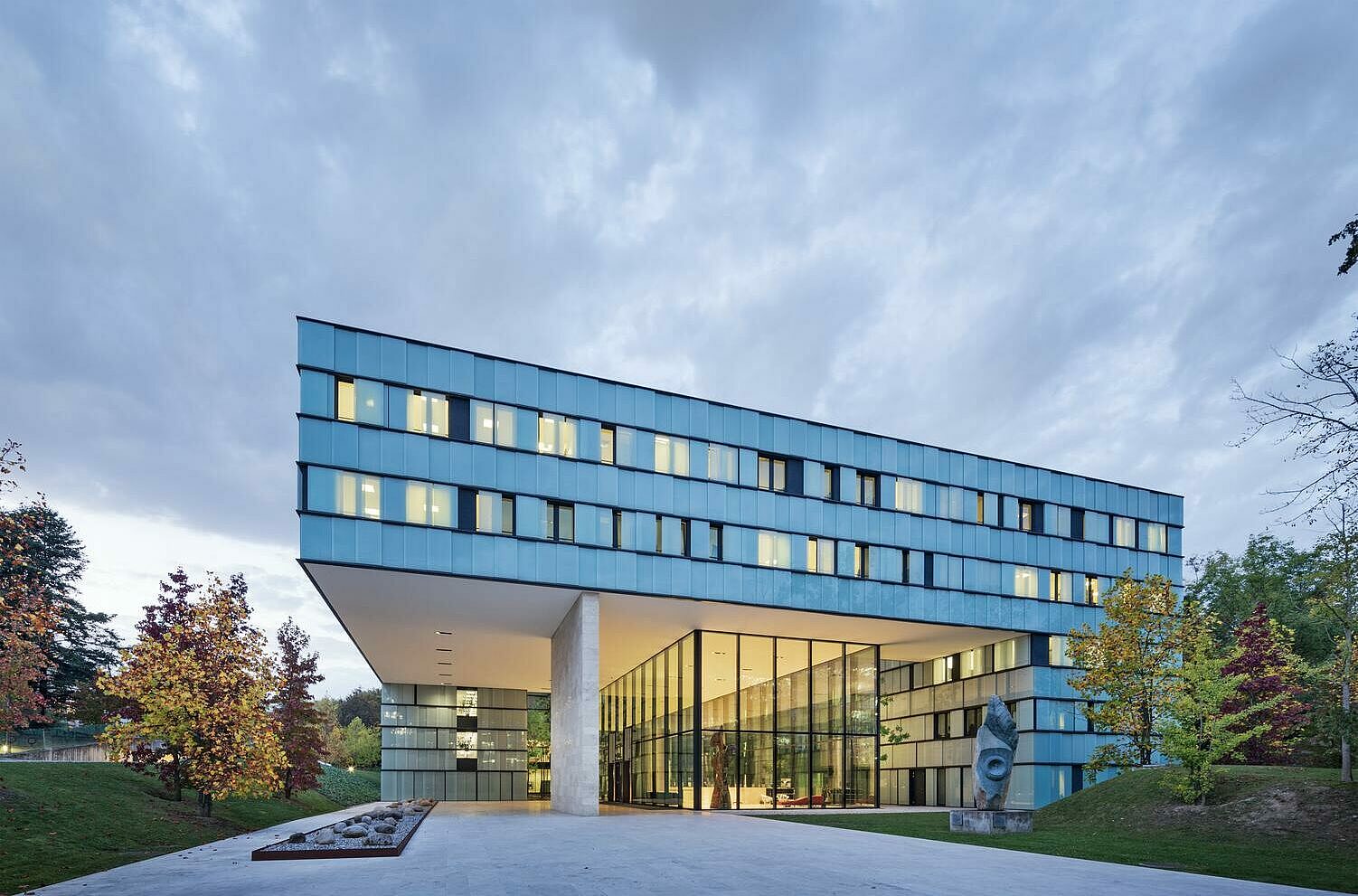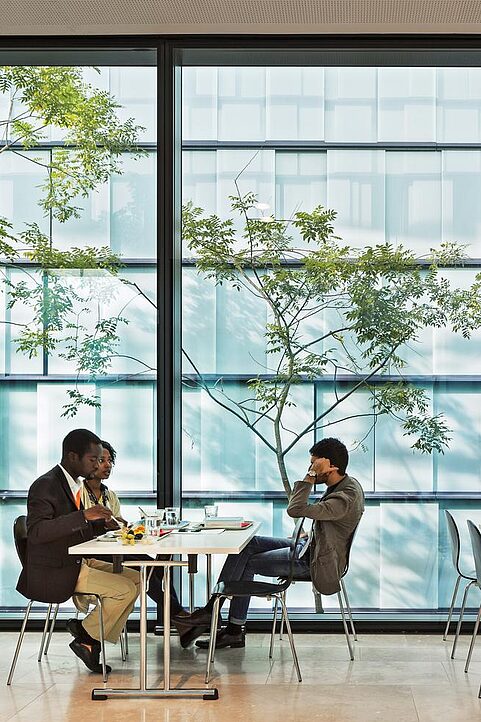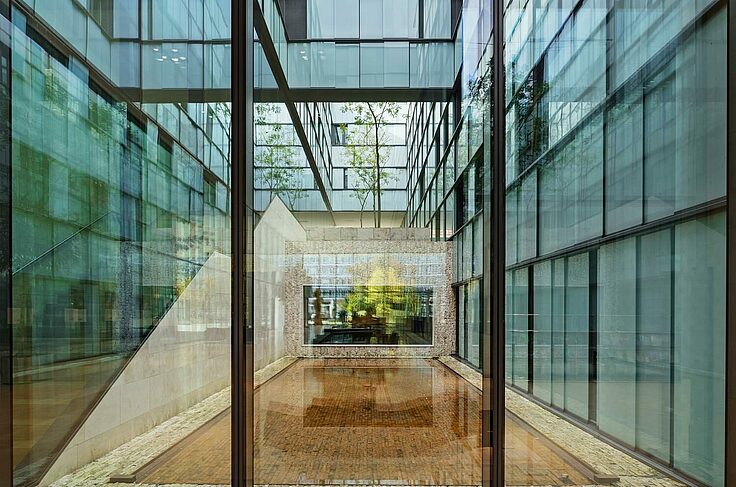More content
Office and Administration

The task, on the WHO’s park-style site above Geneva, was to design a new admin building to accommodate a workforce of 480 that would expand the WHO'S office facilities and create a new HQ building for UNAIDS. Key aims were to build a relationship with the surrounding landscape, maximise office space with views of the outside world and achieve optimum cost efficiency in terms of building construction and maintenance.
The central theme of the design was transparency. A horizontal slab with two spacious office floors appears to float above the sloping site. Three “feet”, also containing office space, elevate the two main floors three storeys above the ground, spanning a high-ceilinged, transparent foyer that opens up a view along the entire length of the building – from the entrance to the raised café at the end.
Open spaces ensure flexible use and views of the surrounding countryside
Building with the topography. The building owes more than its basic structure to the surrounding parkland and trees, whose influence can also be felt inside the building. The green of the park enters the built space through room-high glazed courtyards, long and narrow, penetrating deep into its length. The two main floors offer flexible space allocation, everything from individual offices to large, open-plan spaces.


Insights
What convinced the jury was the near-perfect balance between the economic, functional and landscape aspects of the design.
To ensure the same architectural quality inside the building despite its highly complex engineering and technical features, a large part of the building plant – including TABS, lighting and the fire alarm system – is housed in the concrete floors. Thermo-active, these floors also help to create a pleasant working environment in the offices.
The façade – design element and sun screen
To underscore the plasticity of the building and to give it a uniform, almost monolithic appearance despite the high proportion of glazing, the façade design was kept as abstract as possible. Manually sliding glass panels, rendered translucent thanks to a white, screen-printed finish, form a sheath around the outer façade and on the walls facing the courtyards. They also provide a sun screen and so improve the building’s thermal balance.